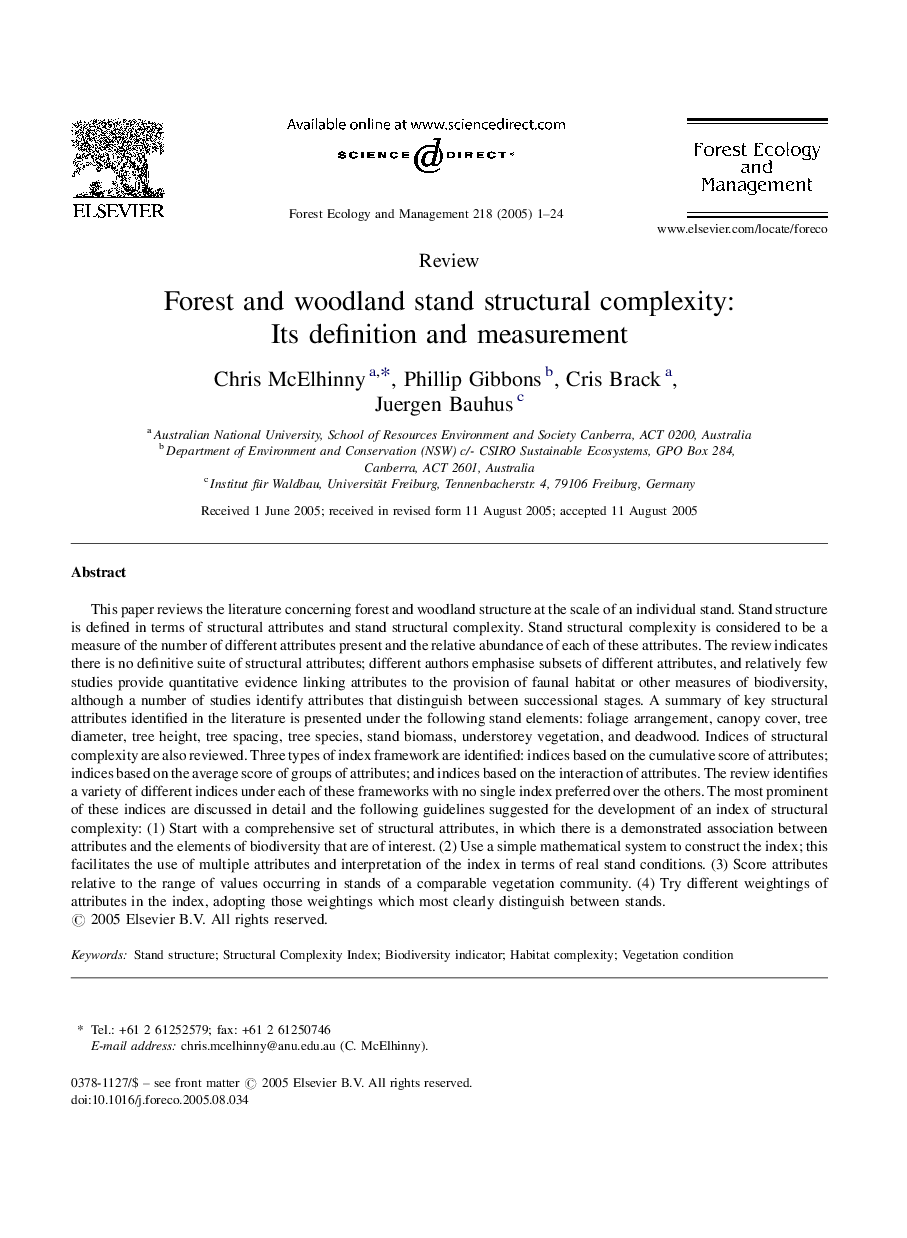| کد مقاله | کد نشریه | سال انتشار | مقاله انگلیسی | نسخه تمام متن |
|---|---|---|---|---|
| 9620117 | 159394 | 2005 | 24 صفحه PDF | دانلود رایگان |
عنوان انگلیسی مقاله ISI
Forest and woodland stand structural complexity: Its definition and measurement
دانلود مقاله + سفارش ترجمه
دانلود مقاله ISI انگلیسی
رایگان برای ایرانیان
کلمات کلیدی
موضوعات مرتبط
علوم زیستی و بیوفناوری
علوم کشاورزی و بیولوژیک
بوم شناسی، تکامل، رفتار و سامانه شناسی
پیش نمایش صفحه اول مقاله

چکیده انگلیسی
This paper reviews the literature concerning forest and woodland structure at the scale of an individual stand. Stand structure is defined in terms of structural attributes and stand structural complexity. Stand structural complexity is considered to be a measure of the number of different attributes present and the relative abundance of each of these attributes. The review indicates there is no definitive suite of structural attributes; different authors emphasise subsets of different attributes, and relatively few studies provide quantitative evidence linking attributes to the provision of faunal habitat or other measures of biodiversity, although a number of studies identify attributes that distinguish between successional stages. A summary of key structural attributes identified in the literature is presented under the following stand elements: foliage arrangement, canopy cover, tree diameter, tree height, tree spacing, tree species, stand biomass, understorey vegetation, and deadwood. Indices of structural complexity are also reviewed. Three types of index framework are identified: indices based on the cumulative score of attributes; indices based on the average score of groups of attributes; and indices based on the interaction of attributes. The review identifies a variety of different indices under each of these frameworks with no single index preferred over the others. The most prominent of these indices are discussed in detail and the following guidelines suggested for the development of an index of structural complexity: (1) Start with a comprehensive set of structural attributes, in which there is a demonstrated association between attributes and the elements of biodiversity that are of interest. (2) Use a simple mathematical system to construct the index; this facilitates the use of multiple attributes and interpretation of the index in terms of real stand conditions. (3) Score attributes relative to the range of values occurring in stands of a comparable vegetation community. (4) Try different weightings of attributes in the index, adopting those weightings which most clearly distinguish between stands.
ناشر
Database: Elsevier - ScienceDirect (ساینس دایرکت)
Journal: Forest Ecology and Management - Volume 218, Issues 1â3, 24 October 2005, Pages 1-24
Journal: Forest Ecology and Management - Volume 218, Issues 1â3, 24 October 2005, Pages 1-24
نویسندگان
Chris McElhinny, Phillip Gibbons, Cris Brack, Juergen Bauhus,